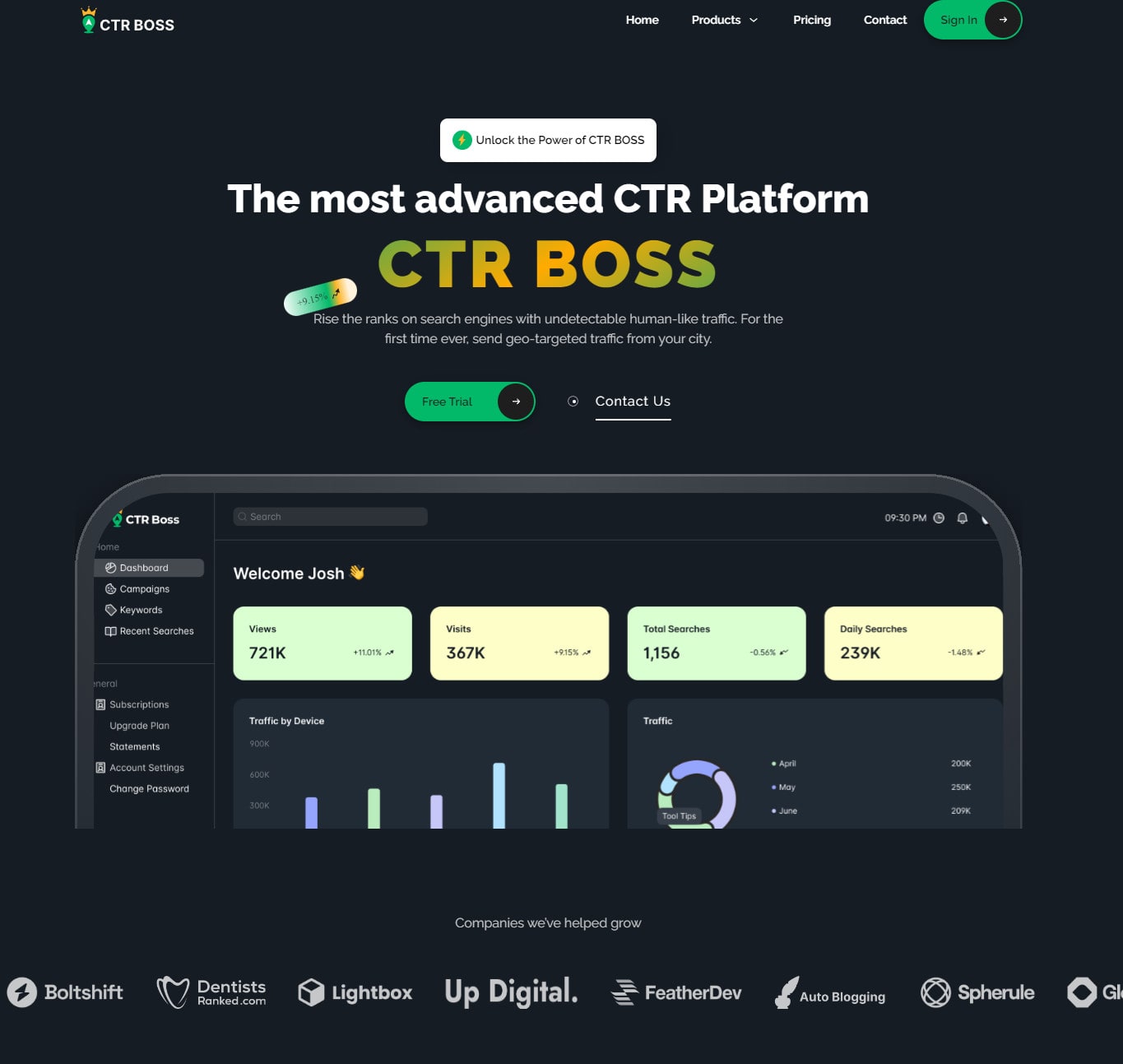Change Your Click-Through Rates with LinkDaddy CTR Manipulation Solutions
Best Practices for CTR Adjustment in Digital Advertising And Marketing
In the competitive landscape of electronic advertising, understanding and manipulating Click-Through Price (CTR) is vital for maximizing project efficiency. Ideal methods, such as crafting engaging headlines and employing clear calls-to-action, can dramatically improve involvement. The duty of A/B screening in determining efficient methods can not be overemphasized. Nevertheless, the nuances of target market actions and choices frequently remain underexplored, offering both chances and obstacles. What specific techniques can online marketers employ to additional improve their approach and ensure sustained success?
Understanding Click-Through Price
Understanding click-through rate (CTR) is important for assessing the efficiency of electronic advertising projects. CTR is a crucial efficiency indication that determines the percentage of individuals who click on a certain link out of the total number of users who view a promotion, email, or web page. It functions as a critical metric for evaluating the involvement level of your audience and the general success of marketing efforts.
A high CTR indicates that the web content resonates with the audience, motivating them to take activity. Alternatively, a low CTR might signify that the material is not appealing or relevant, requiring a reassessment of the advertising method. Aspects influencing CTR consist of the quality of the web content, the positioning of links, and the total user experience on the system.

Crafting Compelling Headlines
Crafting compelling headlines is critical for recording target market interest and driving greater click-through prices (CTR) A well-structured heading works as the initial factor of contact in between your material and potential visitors, making it important to create a strong first impact. - CTR Manipulation Service
To begin, utilize clear and appealing language that aligns with your target audience's rate of interests and needs. Integrating powerful adjectives and activity verbs can evoke inquisitiveness and motivate clicks. In addition, headings that posture concerns or present services to typical troubles can better tempt viewers, as they guarantee important insights.
Using numbers and checklists in headings can additionally boost allure. Headings like "5 Tips for Boosting Your CTR" are not only specific however likewise recommend absorbable and workable material. Additionally, consider the size of your headings; concise headlines, ideally between 50-70 characters, are simpler to read and more probable to be shared across numerous systems.
Finally, A/B screening different heading variants can offer beneficial data on what resonates most with your target market. By continually improving your technique based upon performance metrics, you can develop headlines that drive considerable interaction and improve total CTR.
Utilizing Effective Calls-to-Action
Using the power of efficient calls-to-action (CTAs) is vital for guiding individuals towards wanted end results and increasing click-through prices. A well-crafted CTA acts as a crucial element in digital marketing, routing target market behavior and prompting involvement.
To make the most of efficiency, CTAs need to be clear, concise, and action-oriented. Use strong, commanding verbs that inspire prompt activity, such as "Download," "Subscribe," or "Get going." In addition, the language needs to resonate with the target audience, mirroring their needs and desires.

Moreover, producing a feeling of necessity can dramatically enhance the performance of CTAs. Expressions like "Minimal Time Offer" or "Sign Up With Now to Protect Your Place" can motivate customers to act quickly.
A/B Checking Techniques
Implementing A/B screening strategies is important for maximizing electronic marketing initiatives and enhancing click-through prices. This technique involves contrasting two versions of an electronic asset, such as an email, touchdown page, or advertisement, to identify which variation performs much better in regards to customer interaction. By systematically varying aspects such as headings, photos, colors, and call-to-action switches, marketing experts can collect empirical information to notify their decisions.
To efficiently perform A/B testing, it is vital to establish clear purposes and key performance indications (KPIs) beforehand. This makes sure that the examinations are focused and results are measurable. In addition, a completely large example size is necessary to accomplish statistically substantial results, avoiding the pitfalls of random variation.
Timing is another important variable; tests must be run long sufficient to catch varied individual actions however not so lengthy that exterior influences skew outcomes. Maintaining a regular individual experience throughout both versions helps separate the impact of the evaluated aspect. By adopting these A/B screening strategies, marketers can make informed choices that not just improve click-through rates but likewise enhance total campaign efficiency.
Analyzing Efficiency Metrics
Evaluating efficiency metrics is essential for recognizing the performance of electronic advertising strategies and making data-driven choices. By systematically reviewing essential efficiency indicators (KPIs) such as click-through prices (CTR), conversion prices, and consumer engagement levels, marketers can identify areas for enhancement and maximize their projects accordingly.
To efficiently analyze efficiency metrics, it is crucial to establish clear goals and benchmarks that line up with total marketing objectives. CTR Manipulation Service. This allows for accurate comparisons and informed decision-making. Devices such as Google Analytics, heatmaps, and A/B testing platforms can supply very useful understandings check that right into individual behavior and project efficiency

Conclusion
In final thought, effective manipulation of Click-Through Rate (CTR) in electronic advertising and marketing necessitates the implementation of strategic techniques. Crafting compelling headlines, utilizing persuasive calls-to-action, and carrying out A/B screening are crucial elements.
In the competitive landscape of digital marketing, understanding and adjusting Click-Through Rate (CTR) is essential for maximizing project performance.Recognizing click-through rate (CTR) is necessary for evaluating the efficiency of electronic advertising projects. LinkDaddy CTR Manipulation.In the context of digital advertising, optimizing CTR can lead to boosted conversion rates and far better return on investment. Inevitably, recognizing CTR is a fundamental aspect of driving effective digital advertising and marketing efforts and guaranteeing that campaigns attain their wanted goals
In final thought, efficient manipulation of Click-Through Rate (CTR) in digital this hyperlink marketing demands the application of critical methods.